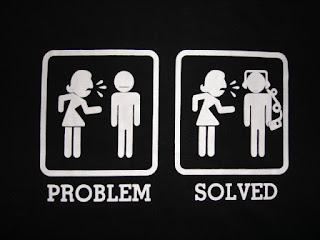Gratitool
In one of my strategy lectures in B school, the professor said that according to certain management literature, around 30% of the success of a company is attributed to the "Firm" effect, referring to how well the company uses its resources, technology etc. 10-15% is attributable to the "Industry" effect referring to the nature and structure of the industry the firm operates in. When a classmate of mine asked the prof what the remaining 55-60% of the success is attributable to, the prof said we're yet to develop statistical tools to explain for this part of the success. I believe this component of success is pure LUCK and luck is a component a lot of people take for granted.
Why am I talking about luck?
Taking the analogy of the company to an individual's life, I believe his/her/their happiness is a function of personal effort(firm effect), the supporting environment(industry effect) and a good chunk of luck. Hence to tap into an individual’s total happiness, the individual should not only be bothered about their personal contributions and effort but also be grateful for this luck. The value of gratitude comes from acknowledging luck as a contributing factor in one’s life.
I thought of a tool which I call GRATITOOL (gratitude tool) which helps me tap into my total happiness by increasing my gratitude levels. Yes. It's slightly philosophical but hear me out.
What is it? Simple tool to increase your gratitude level to help you tap into your total happiness
How does it work?
For every person who comes to you with a problem or anyone you meet on a day to day basis for that matter (from work colleague to house help), actually visualise yourself in their position. I mean ACTUALLY visualise yourself in their position. Would just take a few nano seconds. It was because of pure luck that you are where you are and they are where they are. You could as well have been in their position. What would the real you(using the gratitool) have wanted to do for the other person is what you should actually do. Once you start helping the other person, it starts generating happiness in them. This leads to the luck/gratitude component of YOUR happiness increasing pushing you to use gratitool even further. This drives you to continue to help the other person, which makes them even happier which further increases your luck/gratitude component of happiness and this pattern runs on a happiness loop infinitely increasing your total happiness
And what's the physics of gratitool?
Assuming we've all been created from the same energy source, it means all our energies are connected. When you help someone, that creates positive energy in them which makes them happy. Since all our energies are connected, the positive energy from the other person flows through this energy connection and feeds back to you creating positive energy in you which makes you happy and this makes you want to help the other person further and this goes on an infinite loop. I believe that's why you feel good when you help others.
Various religions and philosophies talk about this concept but makes it seem as if it has to be MANDATORY that one has to be selfless/go out of their way to help others. This encourages the thought process that if your act is not selfless, you’re losing out on happiness and in turn generates guilt. Many people are not aware/discount the gratitude component of happiness. This alternate perspective of looking at the same is pure physics, seems more logical and easy to implement for me and I hope for you as well.
When you're aware of luck, more importantly acknowledge it as a contributing factor in life and then give back to society by helping others, you're tapping into an alternative source of happiness. That I believe is the link between awareness of luck and happiness. Think of this as a mind hack - a different way of looking at things - in my case, I consider myself selfish for my own total happiness that I help out people with an intent of feeling the luck/gratitude part of my total happiness as well.
Gratitool and the physics of it might sound interesting, but could be challenging to implement. For adults who've already lived life a particular way, it's difficult to change the programming in their mind, although definitely possible. Gratitool would be helpful particularly to mold children with a service mindset, which will help them look at happiness through a different lens.
I know this is debatable. But this helps me. Just like kickstarting a car, it used to be a forced act in the beginning to kick start my mind with gratitool. After all, one's mind is far more complicated than a machine. Changing behavior is difficult and time taking. Over the last few years, I've used gratitool and slowly it has started to become second nature. Try using this tool and let me know if this is of any benefit in the comments/DM me and let me know your views on this perspective.
Cheers! 









